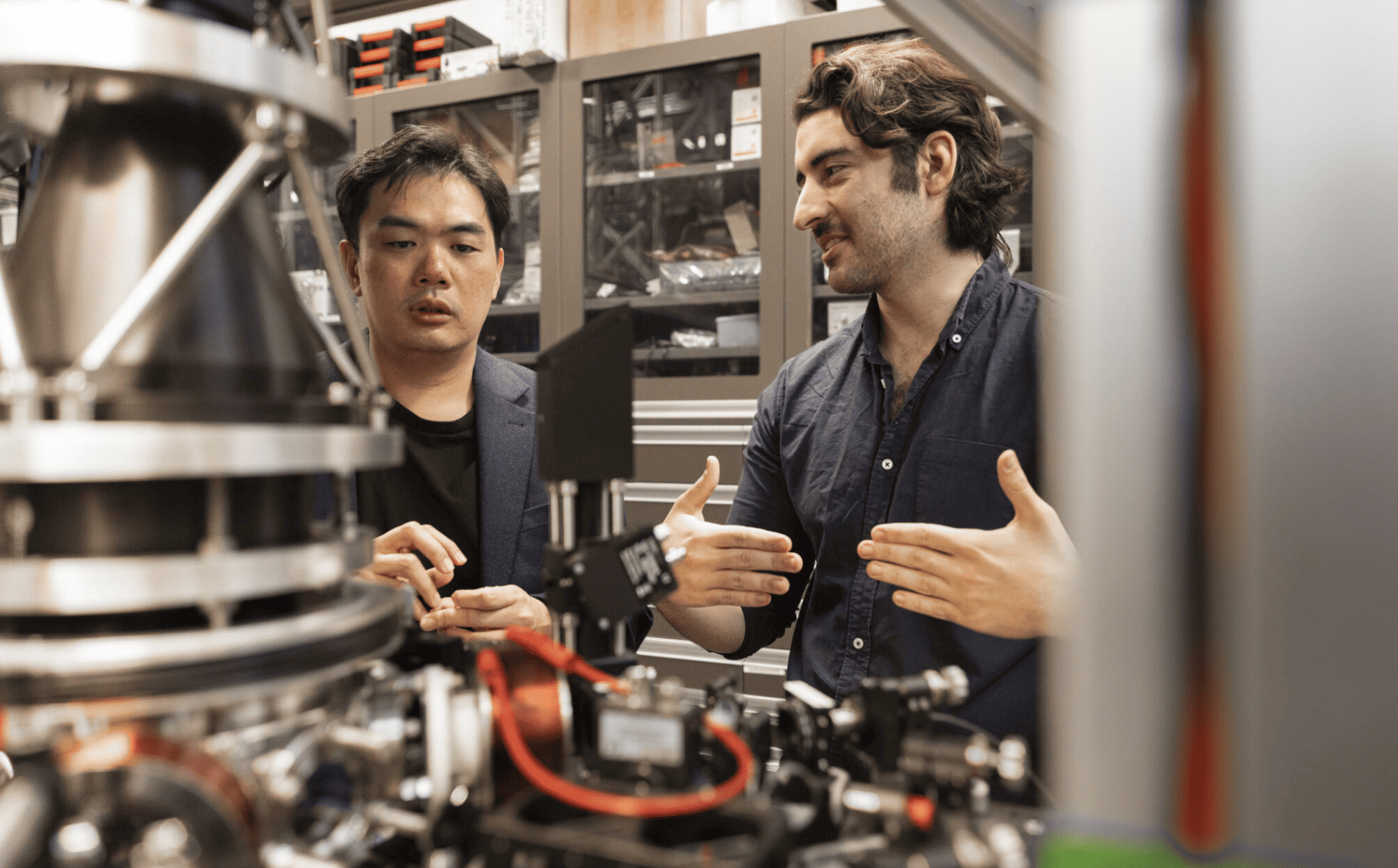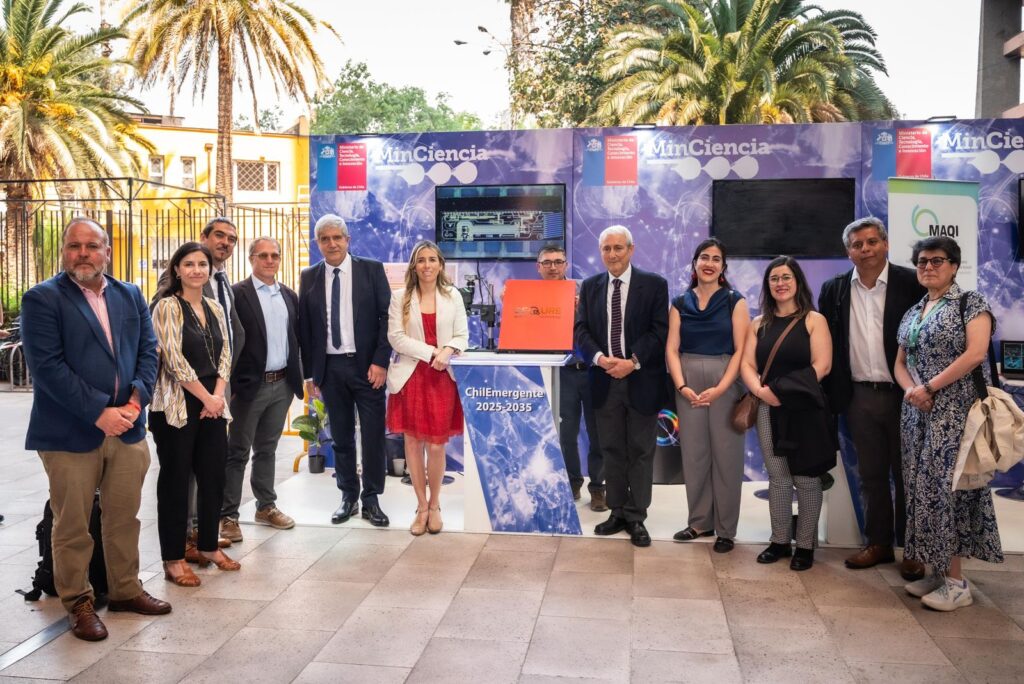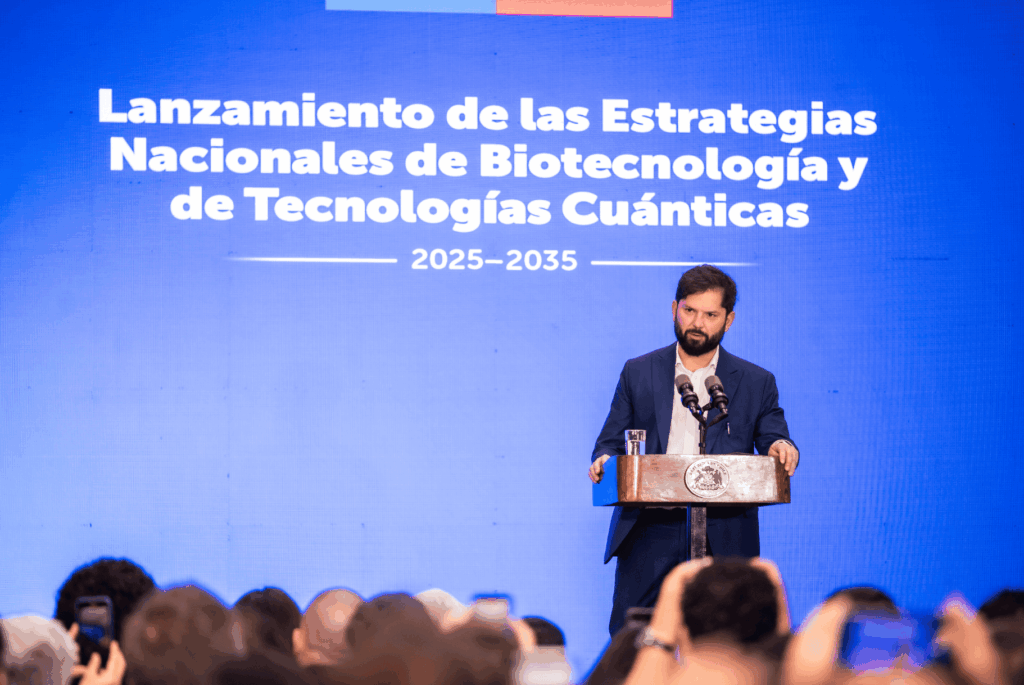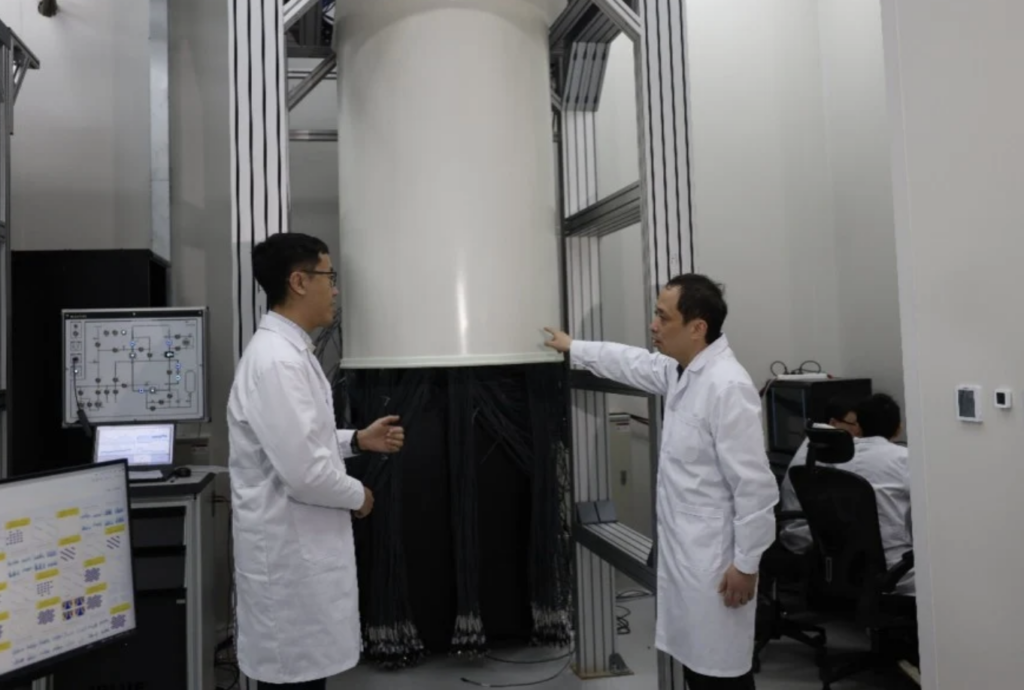Insider Brief
- Researchers at the University of Sydney, working with Q-TRL scientists, have demonstrated a universal quantum logic gate using GKP error-correcting codes encoded in a single trapped ion.
- The experiment entangled two logical qubits stored in the natural vibrations of one ytterbium atom, greatly reducing the number of physical qubits required.
- The results, published in Nature Physics, mark a milestone in hardware-efficient quantum computing by showing scalable error correction with fewer resources.
- Image: Dr. Tingrei Tan, left, with doctoral student Vassili Matsos. (Fiona Wolf)
Building a useful quantum computer has long hinged on solving one of the field’s most persistent problems: the fragility of qubits. However, these quantum bits, the basic units of information, are prone to spontaneous errors that can quickly undermine calculations. To counter this, researchers encode information across multiple physical qubits, suppressing errors so that a smaller set of logical qubits can function reliably.
And you just knew there was going to be another “however”… However, as the number of logical qubits grows, the physical hardware requirements expand even more dramatically. That overhead makes the engineering of a large-scale quantum machine daunting.
Now, researchers at the University of Sydney’s Quantum Control Laboratory, part of the Sydney Nano Institute, have demonstrated a new approach that significantly reduces the number of physical qubits needed for quantum operations, according to a press release from the university.

Turning Theory into Practice
The team built an entangling logic gate on a single trapped atom using an error-correcting scheme known as the Gottesman–Kitaev–Preskill (GKP) code. Often referred to as the “Rosetta stone” of quantum computing, the code translates the smooth oscillations of quantum systems into discrete, digital-like states. That makes errors easier to detect and correct while offering a compact way to encode logical qubits.
Although theorists have long recognized the potential of GKP codes to shrink the hardware demands of quantum error correction, implementing them has been a steep challenge. The codes require intricate control of quantum systems, and for years they remained largely a theoretical promise.
The new work, published in Nature Physics, brings that promise into physical reality. Led by Sydney Horizon Fellow Dr Tingrei Tan at the University of Sydney Nano Institute, team used a single trapped ion of ytterbium, held in a Paul trap at room temperature and manipulated with a laser system, to store GKP codes. They then demonstrated entangling logic gates between those encoded states.
“Our experiments have shown the first realisation of a universal logical gate set for GKP qubits,” said Tan, according to the statement. “We did this by precisely controlling the natural vibrations, or harmonic oscillations, of a trapped ion in such a way that we can manipulate individual GKP qubits or entangle them as a pair.”
Harnessing Quantum Vibrations
The advance rests on precise control of the harmonic motion of the trapped ion. Each ion naturally vibrates in three spatial dimensions, and those oscillations can be described as quantum states. By manipulating these oscillations, the researchers were able to encode and entangle two logical qubits within a single atom.
This approach dramatically cuts down on hardware. Instead of requiring many physical qubits across a larger array, the logic gate was realized with the internal quantum vibrations of just one trapped particle.
Executing such finely tuned operations required more than experimental skill. The researchers also drew on quantum control software developed by Q-CTRL, a University of Sydney spin-off company. The software employs physics-based modeling to design quantum gates that minimize distortions in GKP states, ensuring that their delicate structure is preserved during computation.
“Effectively, we store two error-correctable logical qubits in a single trapped ion and demonstrate entanglement between them,” said First author Vassili Matsos is a PhD student in the School of Physics and Sydney Nano. “We did this using quantum control software developed by Q-CTRL, a spin-off start-up company from the Quantum Control Laboratory, with a physics-based model to design quantum gates that minimise the distortion of GKP logical qubits, so they maintain the delicate structure of the GKP code while processing quantum information.”
By integrating this control with their experimental setup, the team could both manipulate individual GKP qubits and entangle them in pairs—steps that collectively amount to a universal gate set for this form of error correction.
A Significant Step for Hardware-Efficient Quantum Computing
The experiment marks an important step in efforts to build scalable quantum machines. By showing that universal logic gates can be realized with GKP qubits encoded in a single ion, the Sydney group demonstrated a path to quantum processing that requires far fewer physical components.
That efficiency is crucial. Current projections for error-corrected quantum computers often involve millions of physical qubits to deliver thousands of logical ones. Approaches that cut into that overhead could make the construction of practical systems far more feasible.
The team carried out three separate experiments with a trapped ytterbium ion, carefully demonstrating both the encoding of GKP qubits and their entanglement via logic gates. Their results show that high-quality control of atomic vibrations can support more than one logical qubit at a time, while maintaining the protective features of the error-correcting code.
The work underscores the potential of combining theory-driven error correction with precision laboratory control to address one of the most pressing engineering challenges in quantum computing: scaling without being overwhelmed by hardware demands.
“GKP error correction codes have long promised a reduction in hardware demands to address the resource overhead challenge for scaling quantum computers,” said Tan. “Our experiments achieved a key milestone, demonstrating that these high-quality quantum controls provide a key tool to manipulate more than just one logical qubit. By demonstrating universal quantum gates using these qubits, we have a foundation to work towards large-scale quantum-information processing in a highly hardware-efficient fashion.”
















